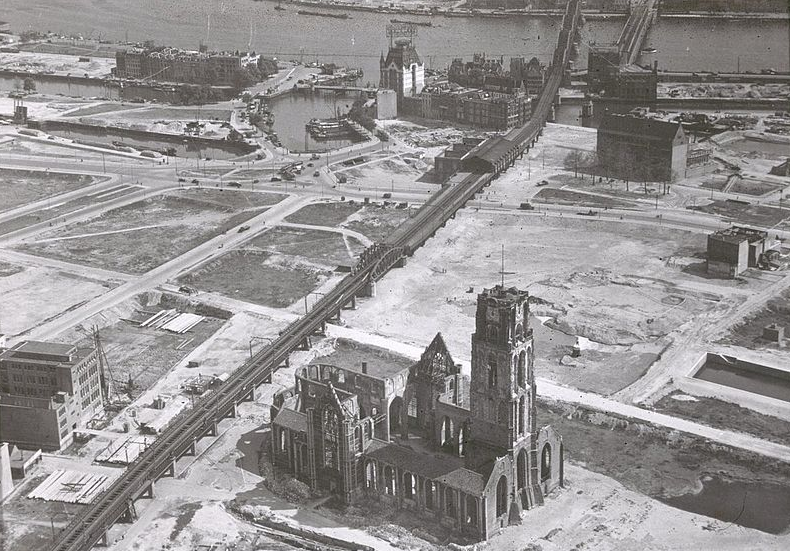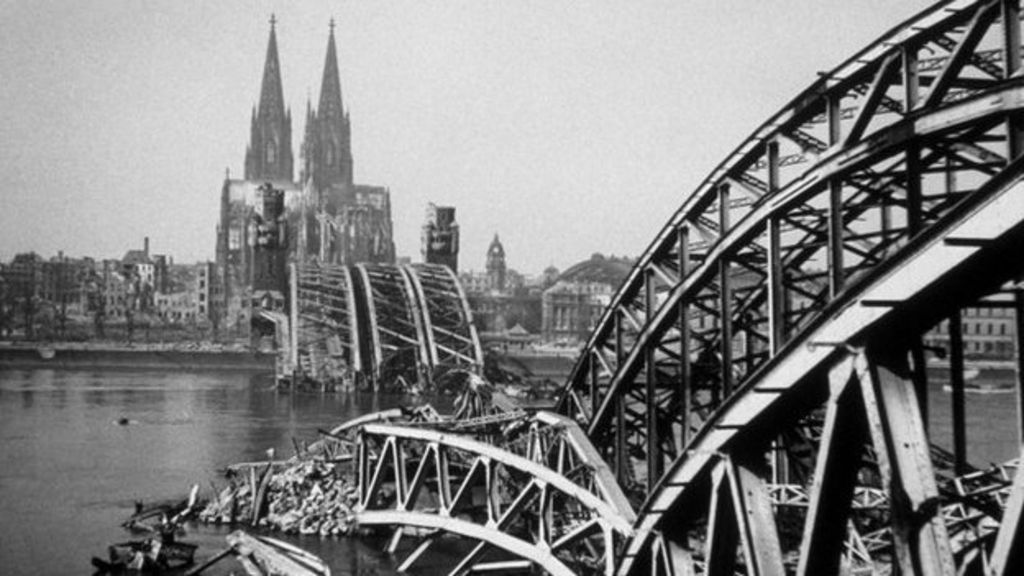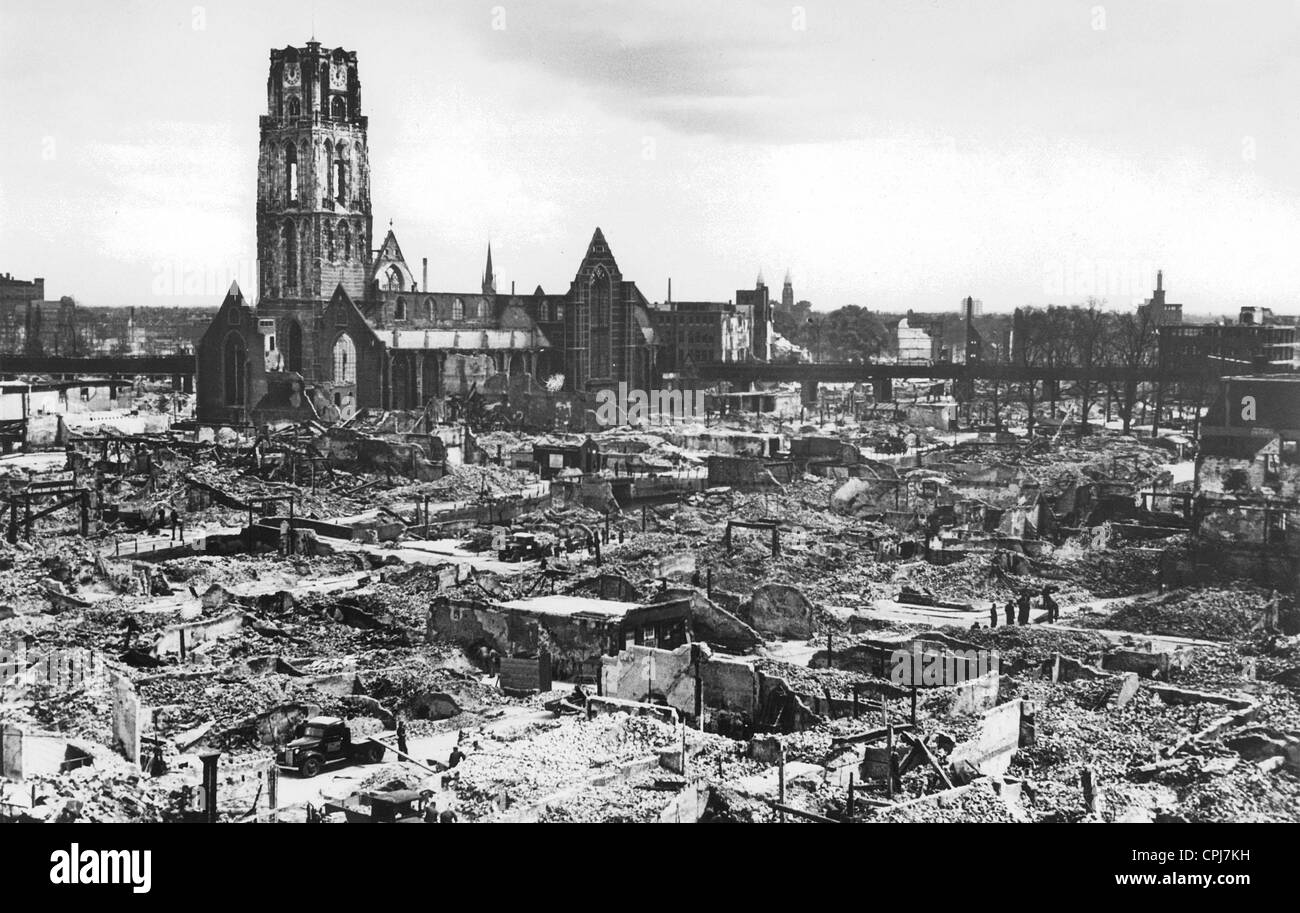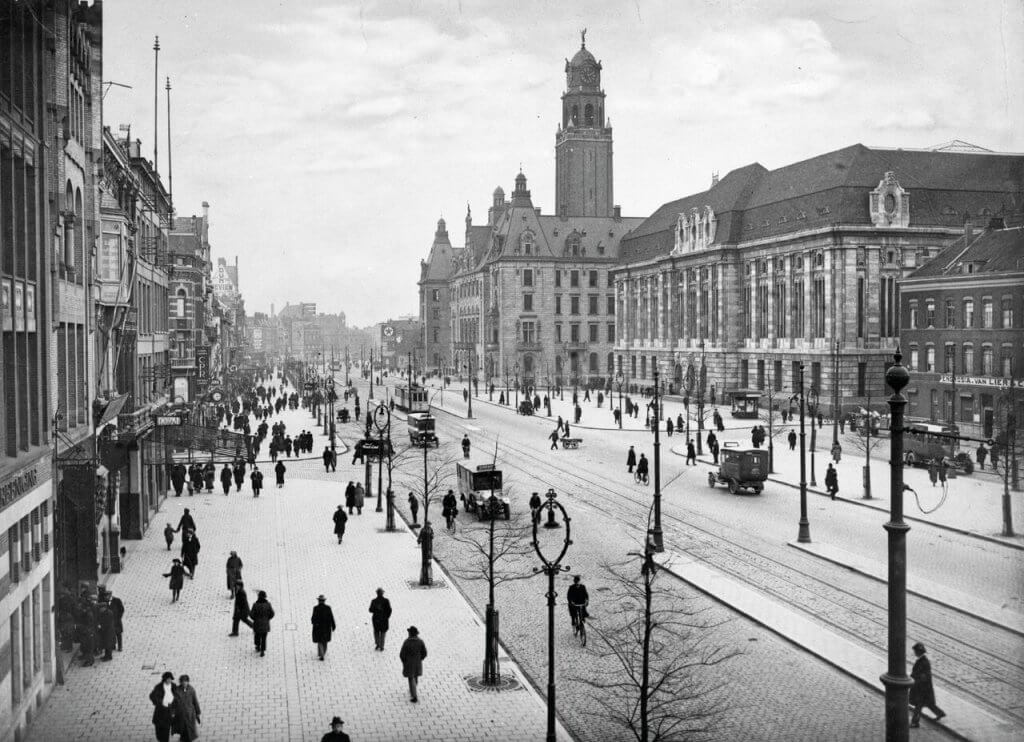
WHKMLA Documents, the Bombardment of Rotterdam 1940
The Battle of Rotterdam was a Second World War battle fought during the Battle of the Netherlands. Fought between 10 and 14 May 1940, it was a German attempt to seize the Dutch city. It ended in a German victory, following the Rotterdam Blitz. [2] Prelude Rotterdam had no prepared defences and had not been included in any strategic defence plan.

10 things you need to know about the end of World War II in the Netherlands DutchNews.nl
The 97.000 kilo's of bombs and the resulting fires killed more than 850 people, destroyed thousands of buildings and left 80,000 homeless. The bombing was a 'mistake' Apparently, when the Germans invaded the Netherlands, they met with more opposition than expected.

WHKMLA Documents, the Bombardment of Rotterdam 1940
The hole in the figure's trunk has been commonly understood as a metaphor for Rotterdam's destroyed city centre, as the artist intended, and the raised arms suggest both hope and despair (Bleij and Halbertsma, 1994: 70; Strupp, 2009: 32; Van Ginkel, 2011: 668-671).These meanings gave the bronze sculpture its iconic status and show that material objects can serve as metaphors for death.

WHKMLA Documents, the Bombardment of Rotterdam 1940
Germany invaded the Netherlands on May 10, 1940. Four days later, German planes bombed Rotterdam. The Germans tried to halt the raid on the city because Dutch authorities had agreed to negotiate the surrender of their country. However, a communications failure delayed the order halting the attack. The bombing destroyed much of the city center.

What Rotterdam Looked like Before World War II • Globonaut
Before the 1940 Bombing: 82 Incredible Photos Document Everyday Life in Rotterdam During the 1920s and 1930s . August 19, 2016 1920s, 1930s, life & culture, Netherlands, Rotterdam, street Rotterdam is a city in the Netherlands, located in South Holland, within the Rhine-Meuse-Scheldt river delta at the North Sea..

Germany WW2 bomb find prompts Cologne's biggest evacuation BBC News
The attack, which has become known as the Rotterdam Blitz or the bombardement op Rotterdam, decimated the city and destroyed the historic centre of Rotterdam, and resulted in the death of 711 people. Around 85.000 people were left homeless as a result of the attack.

WHKMLA Documents, the Bombardment of Rotterdam 1940
Stunning colourised footage of Rotterdam before WWII (video inside!) This newly colourised footage of Rotterdam before the WWII German bombing offers a glimpse into the city's past before it became the modern architectural city.
/s3/static.nrc.nl/bvhw/files/2018/08/data35451182-ed23c7.jpg)
Luchtfoto Rotterdam voor WOII NRC
The bombing of Rotterdam. Rotterdam had been the scene of bitter fighting since the beginning of the attack, but the Germans had not succeeded in taking the city. And so, on 14 May 1940, German general Schmidt presented the Dutch command with an ultimatum.. Even before the ultimatum had expired, the German bombers appeared on the horizon.
.jpg)
Johan Hendrik van Mastenbroek (18751945) , Zuidblaak te Rotterdam a view of the Zuidblaak in
Jun 22, 2017 Lincoln Riddle, Guest Author Rotterdam's city centre after the bombing. The heavily damaged (now restored) St. Lawrence church stands out as the only remaining building reminiscent of Rotterdam's medieval architecture. The Battle of Rotterdam began May 10th, 1940, and ended with the bombings on Rotterdam May 14th, 1940.

WHKMLA Documents, the Bombardment of Rotterdam 1940
Photo report: the Netherlands at war, 1940-1945. This year, we're celebrating 78 years since the end of World War II. The world we live in today is quite different, making this the perfect day to reflect on the grand historical event that WWII was. World War II was something unprecedented in the history of humankind, and the marks it left.

What Rotterdam Looked like Before World War II • Globonaut
The destroyed city. 14 May 1940, marked a traumatic breaking point in the story of Rotterdam. Bombing, fire, and rubble clearance destroyed a large portion of its built history. During reconstruction, the focus was on turning Rotterdam into a thoroughly modern metropolis. Few people alive today can remember the city before the war.

bombardementrotterdam2shutterstock MAX Vandaag
Rotterdam was subjected to heavy aerial bombardment by the Luftwaffe during the German invasion of the Netherlands during the Second World War. The objective was to support the German troops fighting in the city, break Dutch resistance and force the Dutch army to surrender. Bombing began at the outset of hostilities on 10 May and culminated with the destruction of the entire historic city.

How Dresden Looked After a World War II Firestorm 75 Years Ago The New York Times
An attack on the city of Rotterdam on 31 March 1943 was made by 102 USAAF bombers. The target was the shipyards and dock area, in the west of Rotterdam. The bombing took place at 12:25 (BST) in cloudy conditions, and only 33 B-17s dropped 99 tons of bombs. [3] The industrial area between Keilehaven and Merwehaven was hit. [2] ".

Nach der Bombardierung von Rotterdam, 1940 Stockfotografie Alamy
The German army only needed 15 minutes to throw 97 tonnes of bombs and wipe out the center of Rotterdam. In this bombing, only civilians were killed. There are several monuments in the city that remind of war. "The Destroyed City" and "Ongebroken verzet" (Unbroken resistance). You can also see old photos in the streets of Rotterdam.

What Rotterdam Looked like Before World War II • Globonaut
The Germans used the threat of bombing Rotterdam, the Netherlands, to try to get the Dutch to come to terms and surrender. After a second ultimatum had been issued by the Germans, it appeared their effort had failed and on 14 May 1940, Luftwaffe bombers were ordered to bomb Rotterdam in an effort to force the capitulation of the besieged city.

A short history of Rotterdam Inside Rotterdam Magazine
Rotterdam was subjected to heavy aerial bombardment by the Luftwaffe German invasion of the Netherlands during the Second World War. The objective was to support the German troops fighting in the city, break Dutch resistance and force the Dutch army to surrender.